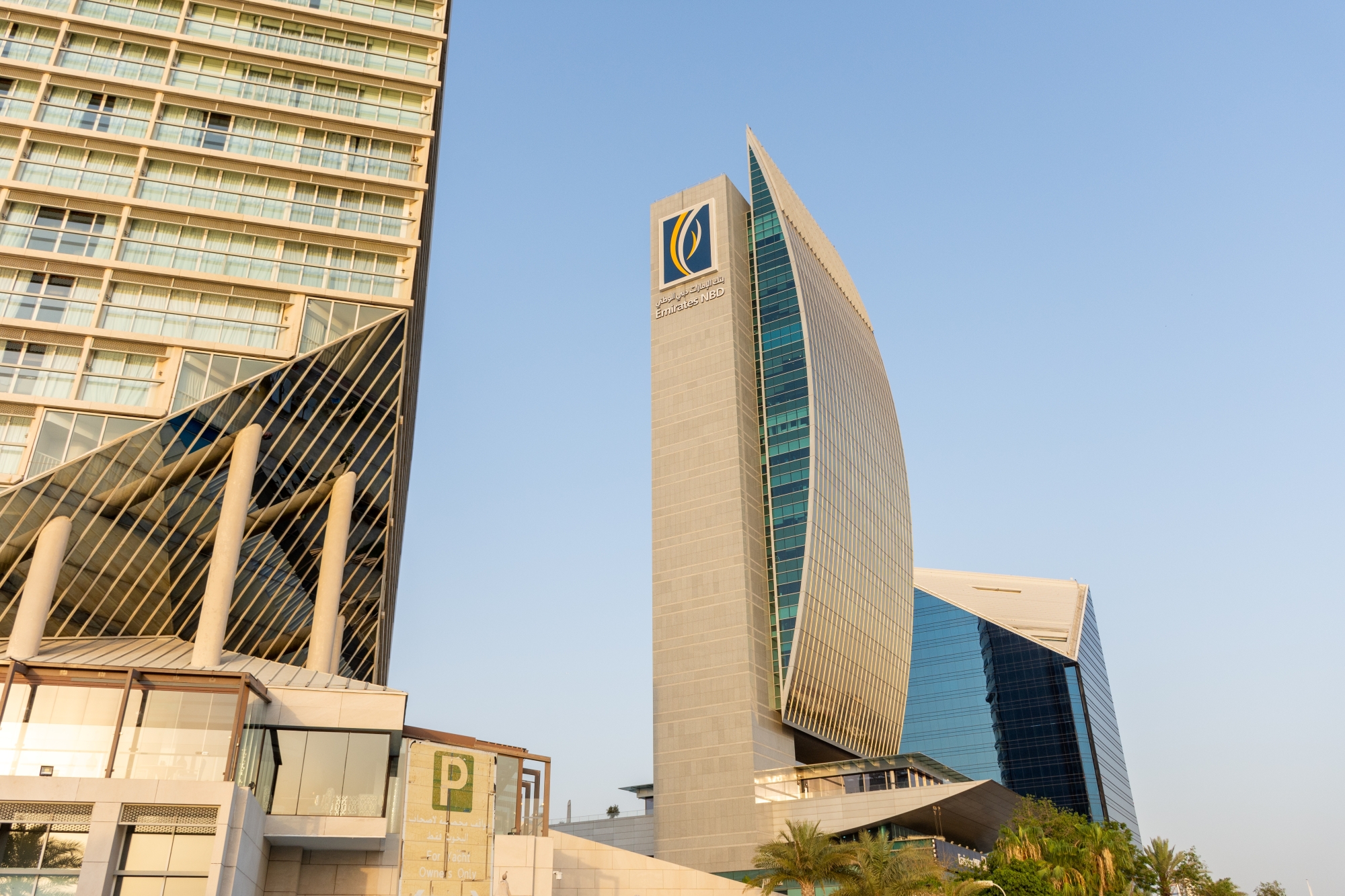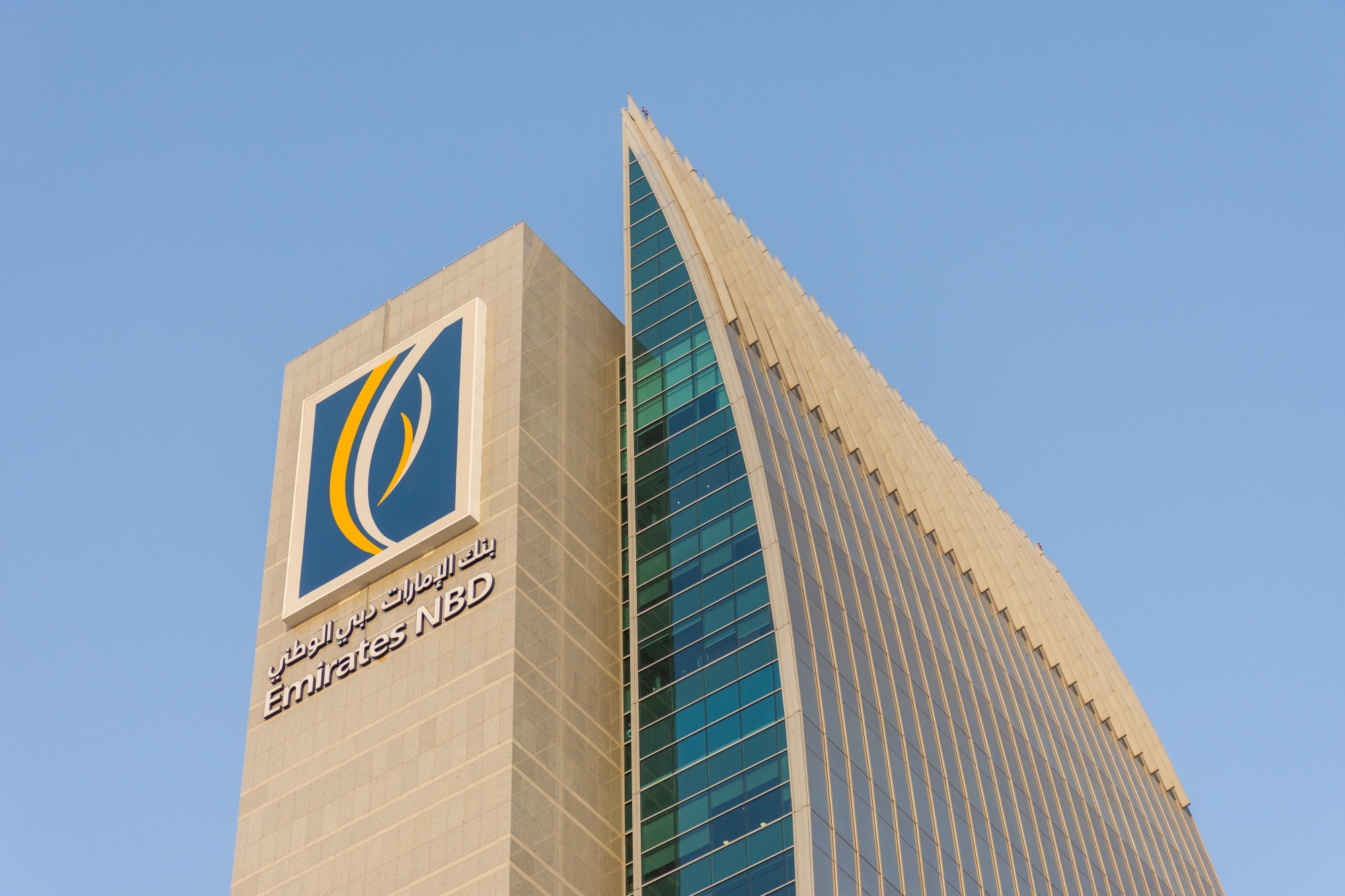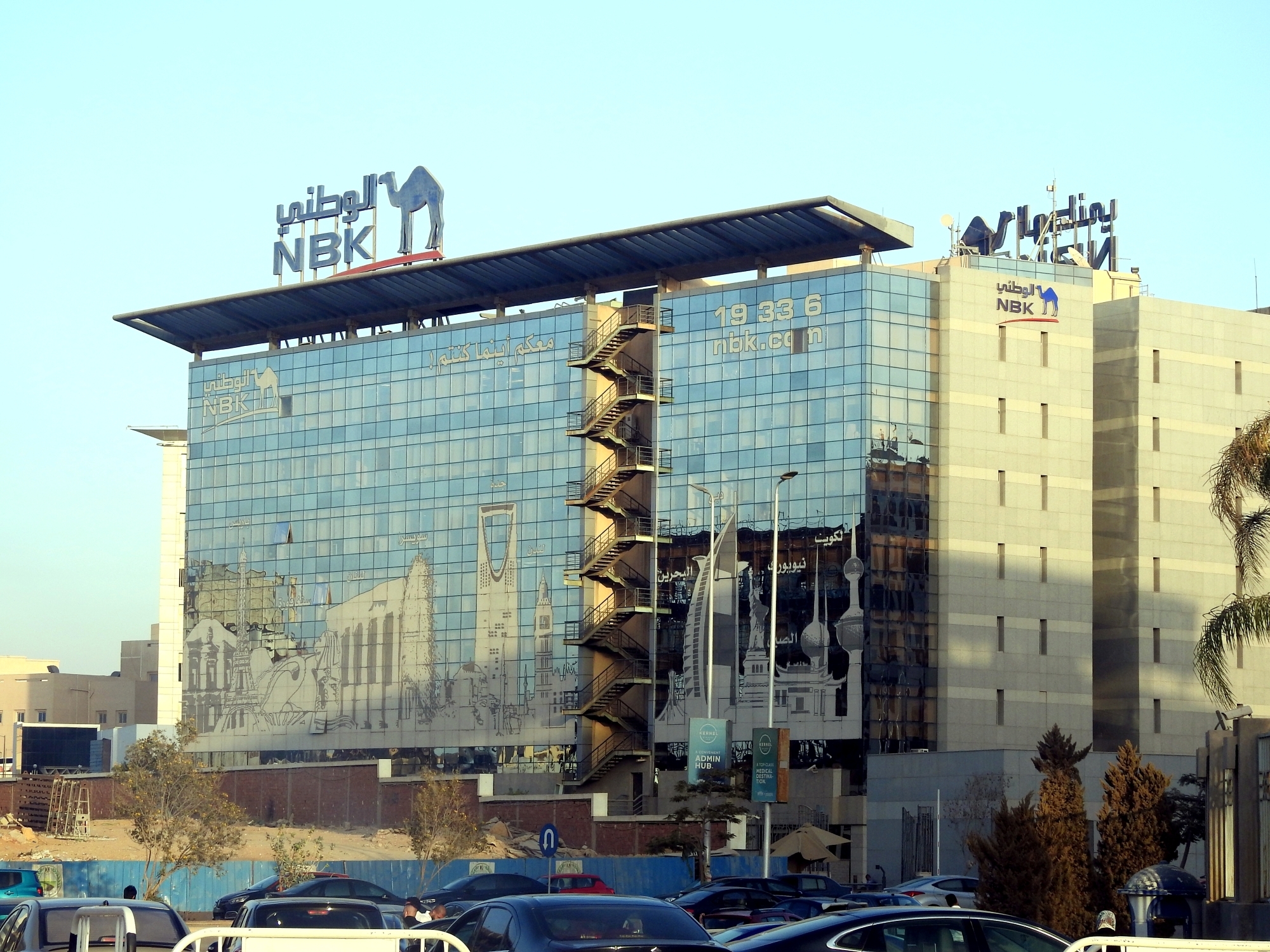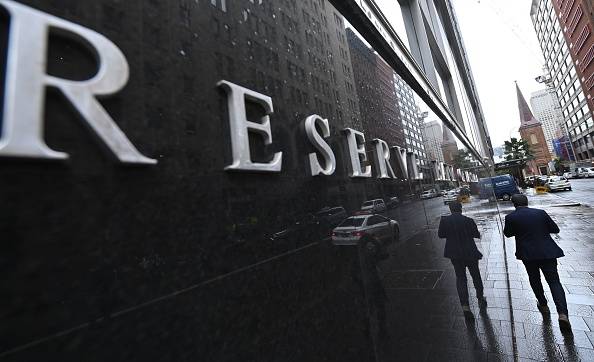What’s Killing Productivity? Some Think It’s the Banks
Bank lending in the U.K. is going to property rather than innovative businesses
LONDON—The birthplace of the industrial revolution is in dire need of innovation. Standing in the way: Britain’s mortgage-laden banks.
The U.K.—inventor of the factory system, steam engine and passenger rail—is at the forefront of a 21st-century global productivity slowdown. Growth in U.K. productivity, or output per hour worked, has halved since the financial crisis, leading some policy makers to call this era Britain’s lost decade. Among the world’s seven largest developed economies, only Italy has fared worse.
The causes are hotly debated, and include an ageing population, tighter regulation and the U.K.’s departure from the European Union. But a factor that has gained special attention: the way U.K. banks have tilted lending to the booming housing market.
Bank lending for projects that boost economic output, such as machinery and software, has stagnated. Research and regulators say the two trends are linked: As real-estate prices soared, banks shifted more capital toward housing, viewed as less risky because the loans were backed by tangible assets with rising values.
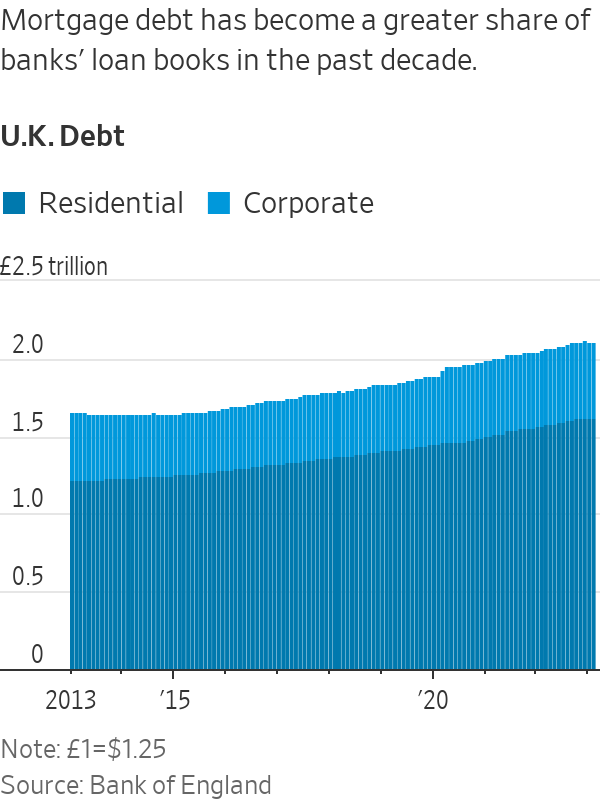
“The banking system is increasingly becoming a brake on the economy,” said Jonathan Haskel, a member of the Bank of England’s Monetary Policy Committee.
The U.K. is an extreme example of what’s happened in big economies around the world for the better part of this century. Central banks cut interest rates in the 2010s through early 2022 to make it cheaper for businesses to borrow and invest. But while debt rose sharply, most of it went toward real estate.
The world’s total assets—including those held by households, businesses and banks—more than tripled from 2000 to 2020, according to a report from the McKinsey Global Institute, a research group. Two-thirds are stored in real estate; only a fifth are in productivity-boosting assets such as factories, equipment and infrastructure, McKinsey said. “The historic link between the growth of net worth and the growth of GDP no longer holds,” the report said.
Among the world’s 10 biggest economies, the U.K. is tied with France for having the lowest share of net worth in assets that boost economic growth. Meanwhile, the U.K.’s home values and mortgage debt have exploded.
U.K. banks added £400 billion, equivalent to about $500 billion, to home lending in the decade through this February, Bank of England data show. Debt extended to businesses grew by only one-tenth of that amount.
The U.K.’s big banks “pulled back in the financial crisis and never really came back” in terms of business lending, said Richard Davies, a former regional head for Barclays’s U.K. business banking operations who now leads Allica Bank, a London startup that lends to small and midsize businesses. “The big banks are obsessed with residential mortgages.”
The obsession with mortgages leaves some businesses feeling sidelined.
Geometric Manufacturing, based in Tewkesbury, England, makes defence and cybersecurity products. Several years ago the firm asked a U.K. bank for a loan to design and manufacture a robotic arm to load its machines, an investment that would allow the factory to produce more with fewer workers, Managing Director Paul Wenham said.
Despite the option for a government guarantee through a U.K. program to help small businesses, the bank declined to participate, Wenham said. The company eventually received a small loan from a London-based startup lender. The loan came with a high interest rate and was smaller than what the company had sought.
His inability to get a bigger loan delayed the project by years, Wenham said. “We could have been reaping the rewards and benefits so much sooner,” Wenham said.
Dozens of startup lenders have stepped in to fill the void created by the retrenchment of big banks. They provided about half of all new loans to small and midsize businesses last year, government figures show. But they charge high interest rates on business loans, said Mike Conroy, director of commercial finance at UK Finance, the banking industry’s main trade group.
Conroy said the biggest factor behind weak business investment is a lack of demand, not supply. Many entrepreneurs are reluctant to take on debt, or simply don’t aspire to grow, he said. “The U.K. has many small businesses making a great contribution to the U.K. economy and local communities, even though they don’t aspire to be the next Microsoft or Google,” Conroy said.
Research in the U.S. and Australia shows that banks respond to rising home values by shifting capital away from businesses. U.S. banks located in areas with robust housing markets in the early 2000s bubble boosted mortgage lending while cutting business lending, according to a 2018 research paper in the Review of Financial Studies.
In the U.K., rules put in place after the financial crisis force banks to hold higher levels of capital for business loans, which are deemed riskier, than for mortgages.
Matt Hammerstein, CEO of Barclays’s U.K. operations, said banks have increasingly required all borrowers—whether homeowners or businesses—to put up physical assets that the lenders could sell if the borrowers fail to repay. Many business owners refuse to put up their assets, such as homes, as collateral and thus don’t win approval for loans, he said.
“What banks have done over time in order to be able to underpin their risk appetite is to expect entrepreneurs to put more of their own equity at risk,” Hammerstein said. “If you’re lending to a small business, particularly one that has intangible assets, you’re going to want some collateral.”
Default rates among established small and midsize businesses is low—about one in 50 will default in a given year, said Davies of Allica Bank. But determining each company’s risk—and thus what interest rate to charge and how much capital to hold—is less accurate and more time-consuming for big banks, which have instead shifted resources to mortgages.
In 2018, Jurga Zilinskiene wanted financing to develop software to expand her London-based language-translation business, Guildhawk. The 40-employee company translates documents for companies around the globe.
She asked a big U.K. bank for a seven-figure loan; they lent her a fraction of that, citing her lack of tangible assets that could back the loan if she defaulted. Many of her assets are intangible, such as intellectual property.
She worries that banks are too focused on making a quick profit rather than supporting the long-term health of the economy. “How can I compete with global enterprises in the United States, China?” she asks.
 Copyright 2020, Dow Jones & Company, Inc. All Rights Reserved Worldwide. LEARN MORE
Copyright 2020, Dow Jones & Company, Inc. All Rights Reserved Worldwide. LEARN MORE
SAS partnered with Dubai Islamic Bank (DIB) to upgrade its AI-powered AML platform on Microsoft Azure, enhancing financial crime detection and compliance. Announced at GITEX 2025, the move supports DIB’s digital transformation and strengthens its regulatory resilience.
Aramco can sustain 12 million bpd output for a year without extra cost, CEO Amin Nasser said, reaffirming focus on low-cost, low-carbon oil and expansion in chemicals through deals with Petro Rabigh, Rongsheng Petrochemical, and TotalEnergies.
Esterad Investment Company launched Esterad Capital, a DFSA-licensed asset management firm in DIFC, marking a key step in its regional expansion. The new platform will strengthen partnerships, enhance access to global markets, and focus on private equity, real estate, and alternative investments.
Nolte Küchen, Germany’s leading premium kitchen brand, is expanding in the UAE under its new entity Nolte UAE, investing AED 25 million to launch a flagship showroom by 2026 and strengthen its direct presence — reaffirming its “Made in Germany” quality, innovation, and sustainability.
Nolte Küchen, Germany’s leading premium kitchen brand, is strengthening its presence in the Middle East as part of a renewed global growth strategy rooted in German design excellence and craftsmanship. Having been present in the UAE market since 2007 with Universal Trading Company (UTC), in a mutually agreed step to further ensure market development and expansion. The brand will now transition to a direct-to-consumer model under its new mainland entity, Nolte UAE.
As part of this expansion, Nolte Küchen will invest over AED 25 million in the coming years. This includes the launch of a flagship showroom on Sheikh Zayed Road by early 2026, and the establishment of a dedicated team of engineers, designers, and architects offering end-to-end kitchen solutions defined by German precision and quality standards. The move underscores Nolte Küchen’s confidence in the UAE’s role as a regional hub for design and innovation, as well as a key market in the company’s international expansion. It strengthens its direct relationships with both B2B and B2C customers through greater brand consistency, service excellence, and competitive pricing.
The UAE’s premium kitchen market has nearly doubled since 2020 and is projected to reach US$200 million by 2030, reflecting sustained demand for high-quality European design. The brand’s continued expansion aligns with this growth, positioning Nolte Küchen to meet evolving customer expectations through faster delivery timelines, improved service, and an expanded product range that includes Nolte Küchen, Nolte Neo, Express Kitchen, and Living & Spa. The brand’s mission remains to bring “Made in Germany” quality, design excellence, and innovation to every home, while catering to diverse market segments across both private and professional customers.
Selva Kumar Rajulu, Managing Director of Nolte UAE, said: “Since establishing Nolte FZE in the region in 2011, we have built a strong legacy rooted in innovation and trust. This new phase, as Nolte UAE, enables us to engage more closely with customers and partners, ensuring every project reflects German design excellence. The UAE has always been central to our journey, and this expansion reinforces our commitment to the market and its role in driving our global presence across high-growth international markets.”
In the Middle East, Nolte Küchen’s presence is anchored by its regional competence centre in Dubai, which oversees markets across 30 countries and have managed to deliver more than 80,000 project kitchens and 35,000 retail kitchens in the last years. Supported by over 75 branded showrooms across the Middle East, Asia, and Africa, the Dubai hub delivers landmark developments such as Tilal Al Ghaf and Harmony Villas in Dubai, MERED’s Iconic Residences design by Pininfarina in the UAE, Rafal Residence in Riyadh, and Al Mouj in Muscat, along with large-scale residential and hospitality projects in Qatar, Jordan, and Kuwait. This regional infrastructure enables the brand to serve both developers and homeowners with scale, precision, and local expertise.
Beyond aesthetics, Nolte Küchen has earned the title of Germany’s most popular kitchen brand, recognised for its superior product quality, design innovation, and customer satisfaction by the German Institute for Service Quality over several years. The company offers one of the world’s widest range of finishes, materials, and configurations, with customisation options that set a global benchmark of personalisation in kitchen design. It also holds the distinction of being the world’s most sustainable kitchen brand, maintaining a 100% production base in Germany and the industry’s first independent sustainability report.
The UAE’s Net Zero by 2050 strategy and Estidama Pearl Building Rating System encourage developers and manufacturers to adopt more sustainable construction and design practices. Nolte Küchen is the only German kitchen brand with both FSC and PEFC certifications, reflecting its commitment to long-term environmental responsibility. The brand also releases annual sustainability reports, highlighting its continued investment in responsible production and transparency.
Chris Dixon, a partner who led the charge, says he has a ‘very long-term horizon’
Americans now think they need at least $1.25 million for retirement, a 20% increase from a year ago, according to a survey by Northwestern Mutual
Emirates NBD to acquire a 60% stake in India’s RBL Bank for $3 billion, marking the largest cross-border deal in India’s financial sector and reinforcing the UAE bank’s expansion across high-growth markets.
Middle Eastern bank Emirates NBD will buy a 60% stake in Indian private lender RBL Bank for $3 billion, in the largest cross-border acquisition in India’s financial sector.
Emirates NBD will invest 268.53 billion Indian rupees ($3.05 billion) in the bank through a preferential issue of shares, RBL Bank said in a statement to exchanges.
The deal is among a series of cross-border deals in India this year, and comes months after Japan’s Sumitomo Mitsui Banking Corporation’s move to buy up to 25% of Yes Bank.
UAE banks have also been considering cross-border expansions in the region and further afield. Both ENBD and Abu Dhabi’s FAB have been expanding their presence in markets like Saudi Arabia and Egypt.
TAPPING INDIA’S FAST-GROWING FINANCIAL SECTOR
“This investment reflects ENBD’s confidence in India’s fast-growing financial sector, reinforcing India’s strategic importance within the India-Middle East-Europe Economic Corridor,” the banks said in a joint statement after the deal was announced.
The lender, which is entirely owned by retail shareholders and investment funds, said the deal is subject to regulatory approvals.
India allows 74% foreign investment in private banks but limits shareholdings of any single foreign institution to 15% unless regulator the Reserve Bank of India grants an exemption. The RBI has informally communicated its backing for the ENBD deal, Reuters has reported.
As part of the deal, Emirates NBD will also launch an open offer for additional shares from retail shareholders in line with India’s takeover regulations. They will be offered at 280 rupees per share, according to an investor presentation by RBL Bank.
As per these rules, an acquisition of more than 25% shares in a company requires the acquirer to offer to buy another 26% from retail shareholders.
Emirates NBD will ensure its shareholding does not go beyond the overall 74% foreign investment limit, the exchange announcements from both banks said.
The Dubai-based lender will be designated the “promoter” of RBL Bank, a regulatory classification in India used for large shareholders with management control. It will also have the right to nominate directors to the RBL Bank board, subject to regulatory approvals.
Anand Dama, head of financial sector research at Mumbai-based brokerage Emkay Global Capital Financial Services, said the acquisition “will open up flood gates for more such investments into small- and mid-sized banks in the country”.
PAN-INDIA PRESENCE
RBL Bank’s former CEO Vishwavir Ahuja resigned abruptly in 2021 after the Indian central bank appointed an additional director to its board – a step typically taken to increase scrutiny on a bank.
Since then, the bank has seen a management change and earnings have stabilized. Its stock has soared 90% so far in 2025 against an 8% gain in India’s benchmark Nifty 50 index.
As of March 2025, RBL Bank had assets of 1.46 trillion Indian rupees ($16.61 billion), making it the 13th largest of 21 private banks in the country.
The lender has 15.17 million customers and a network of 562 branches across 28 Indian states and union territories.
“The infusion will significantly strengthen RBL Bank’s balance sheet, enhance its Tier-1 capital ratio, and provide long-term growth capital,” the banks said in the press release.
Investors will watch to see if a combined Emirates NBD-RBL Bank, with so much capital at its disposal, would look at more acquisitions in banking, Dama said.
Emirates NBD, which is majority-owned by Dubai’s government, had assets worth $297 billion as of end-June. Together with other UAE banks, it has benefited in recent years from rising demand for credit and government-driven investment in non-oil sectors.
It has operations in countries including Egypt, Saudi Arabia and Turkey, where it acquired DenizBank in 2019.
Chris Dixon, a partner who led the charge, says he has a ‘very long-term horizon’
Interior designer Thomas Hamel on where it goes wrong in so many homes.
Egypt submits a new state offering program to the IMF, featuring major divestments in renewables, finance, logistics, and airports, as part of its economic reforms — with plans to cut debt to 75% of GDP and attract $2.5B in global investments.
Egypt has submitted a new state offering program to the International Monetary Fund (IMF) as part of its ongoing economic reform efforts, Minister of Finance Ahmed Kouchouk told Al Arabiya Business.
Kouchouk said the program focuses on three to four major offerings during the current fiscal year (FY) in the financial, insurance, airports, renewables, and logistics fields.
He added that a major divestment deal will be announced soon, referring to anticipated transactions in the renewable energy, communication data centers, and mobile towers sectors.
Kouchouk noted that a new debt management strategy will be unveiled in December, focusing on extending the average debt maturity.
The minister confirmed that the government debt has been reduced by nearly 10% of gross domestic product (GDP) within two years, reaching 85% now, with a goal to bring it down to 75% within three years.
He also said Egypt is in talks with Kuwait, Qatar, and several European countries to convert part of its debt into investments, though discussions remain in early stages.
Additionally, Kouchouk mentioned that Egypt still has a chance to attract $2.5 billion in international bonds until next June.
He further confirmed that the fifth and sixth IMF program reviews will be integrated into the current economic reform framework.
According to the IMF’s latest World Economic Outlook, the fund raised its forecast for Egypt’s real GDP growth in FY 2025/2026 to 4.5%, up from its July estimate of 4.1%.
Chris Dixon, a partner who led the charge, says he has a ‘very long-term horizon’
Following the devastation of recent flooding, experts are urging government intervention to drive the cessation of building in areas at risk.
SAS partnered with Dubai Islamic Bank (DIB) to upgrade its AI-powered AML platform on Microsoft Azure, enhancing financial crime detection and compliance. Announced at GITEX 2025, the move supports DIB’s digital transformation and strengthens its regulatory resilience.
SAS, the market leader in Data and AI, has partnered with DIB, the world’s first Islamic bank and the largest in the UAE, to upgrade its Anti-Money Laundering (AML) platform and advance financial crime compliance capabilities, deployed on SAS hosted cloud services, supported by Microsoft. This strategic collaboration, announced at GITEX 2025, reflects DIB’s commitment to staying ahead of evolving regulatory requirements and leveraging advanced technologies to ensure compliance with the global standards and meet industry-specific compliance requirements.
Recognizing the rapid advancements in regulatory frameworks and the increasing complexity of financial crime, DIB is advancing to SAS Viya 4 – a cloud-native, AI-powered analytics platform running on Microsoft Azure– building on its longstanding relationship with SAS. The upgrade will not only modernize compliance operations but also support the bank’s broader digital transformation agenda.
Abdul Waheed Rathore, Group Chief Compliance Officer at DIB said: “Safeguarding the integrity of our operations and maintaining customer trust are foundational to everything we do. In today’s increasingly complex regulatory environment, our partnership with SAS reflects a strategic move to elevate our compliance capabilities which equips us with greater agility, precision, and insight to proactively combat financial crime, while reinforcing our enterprise-wide commitment to strong governance and risk resilience.”
As part of this transformation, DIB will implement SAS’s Financial Crime Analytics — an advanced suite powered by artificial intelligence (AI) and machine learning (ML) — to strengthen its ability to detect and mitigate financial crimes. The platform will deliver faster, deeper insights, empowering the bank to proactively detect, assess, and mitigate financial crime risks with greater accuracy and efficiency
“SAS is proud to support DIB in advancing its financial crime strategy and digital compliance ambitions,” said Michel Ghorayeb, Managing Director, SAS UAE. “Our advanced analytics, AI, and cloud technologies are designed to empower leading organizations like DIB to remain resilient against emerging financial crime threats while ensuring operational efficiency and regulatory compliance. Deployed in cloud with SAS-hosted managed services, we are offering a combination of technology and expertise to deliver exceptional results and safeguard DIB’s customers.”
Imane El Majdoubi, Enterprise Commercial Director, Microsoft UAE stated: “At Microsoft UAE, we are proud to support DIB’s digital transformation journey by providing secure, scalable, and AI-powered Azure cloud capabilities. By partnering with SAS and DIB, we are enabling advanced analytics and compliance solutions that help DIB proactively detect and mitigate financial crime risks, while ensuring regulatory compliance and operational excellence.”
This upgrade is part of DIB’s continued investment in future-ready compliance infrastructure and innovation-led transformation. It reinforces the bank’s long-term commitment to operational excellence and regulatory resilience, while aligning with the UAE’s national vision to position itself as a global hub for financial innovation, transparency, and governance leadership.
Chris Dixon, a partner who led the charge, says he has a ‘very long-term horizon’
Aramco can sustain 12 million bpd output for a year without extra cost, CEO Amin Nasser said, reaffirming focus on low-cost, low-carbon oil and expansion in chemicals through deals with Petro Rabigh, Rongsheng Petrochemical, and TotalEnergies.
Saudi Aramco can sustain crude oil production at 12 million barrels per day (bpd) for a year without incurring additional costs, Chief Executive Amin Nasser said on Monday.
Saudi Arabia holds a substantial share of the world’s spare oil capacity – idle supply that can quickly be brought to market.
Speaking at the Energy Intelligence Forum in London, Nasser projected global oil demand would rise by 1.1 million to 1.3 million bpd this year, and by 1.2 million to 1.4 million bpd in 2026.
Nasser said Aramco’s extraction costs stood at $2 per barrel of oil equivalent (boe) for oil and $1 per boe for gas.
“We are determined to remain dominant in oil thanks to a massive resource base, low costs, and one of the lowest upstream carbon intensities across the industry,” Nasser said.
“We also see resilient demand, and the pressing need for long-term investments in supply is now widely accepted.”
ARAMCO SCALES BACK CAPACITY TARGET
The Saudi energy ministry ordered Aramco in January 2024 to u-turn on a maximum sustainable capacity target of 13 million bpd, reinstating the earlier 12 million bpd target that had been in place before March 2020. The International Energy Agency estimated Saudi Arabia’s spare capacity at 2.43 million bpd in August, out of the 4.05 million bpd held by OPEC+. Saudi Arabia produced more than 9.7 million bpd of crude that month.
The International Energy Agency estimated that Saudi Arabia’s spare capacity was 2.43 million bpd in August out of the total 4.05 million bpd spare capacity held by OPEC+. Saudi Arabia produced more than 9.7 million bpd of crude in August.
Aramco, the world’s top oil exporter, still views chemicals as a strategic growth area, even as rivals such as Shell and Exxon Mobil scale back operations.
“Despite the current downturn, chemicals remain a key long-term growth area, with our proven strengths in both feedstocks and conversion,” CEO Amin Nasser said.
The company has been expanding its downstream and petrochemical portfolio to diversify revenue.
On October 9 it gained majority control of Petro Rabigh by acquiring a 22.5% stake from Sumitomo Chemical. In July, it bought a 10% stake in China’s Rongsheng Petrochemical for $3.4 billion, securing access to a 400,000 bpd refinery.
It is also building an $11 billion petrochemical complex with TotalEnergies at their existing Satorp refinery in Saudi Arabia expected to produce 1.65 million metric tons annually of ethylene from 2027.
TotalEnergies said last month it is expanding in Saudi Arabia due to competitive feedstock and energy costs, even as it closes some European operations.
Chris Dixon, a partner who led the charge, says he has a ‘very long-term horizon’
Esterad Investment Company launched Esterad Capital, a DFSA-licensed asset management firm in DIFC, marking a key step in its regional expansion. The new platform will strengthen partnerships, enhance access to global markets, and focus on private equity, real estate, and alternative investments.
Esterad Investment Company (Esterad) has announced the official launch of Esterad Capital, a newly established Category 3A asset management firm headquartered in the Dubai International Financial Centre (DIFC).
Licensed by the Dubai Financial Services Authority (DFSA), Esterad Capital aligns with Esterad’s growth strategy to expand its regional reach while maintaining strong governance and investment discipline.
Esterad Capital has been established as a regional investment platform, reinforcing Esterad’s commitment to building a stronger footprint in one of the region’s most dynamic financial hubs, said a statement.
The new DIFC office will serve as a gateway for strategic partnerships and will provide enhanced access to international capital markets and investment opportunities.
The launch marks a strategic milestone in Esterad’s regional expansion plans and its ambition to enhance its presence in key financial markets across the GCC, it stated.
“The launch of Esterad Capital marks a pivotal step in our growth journey and reflects our long-term vision to position Esterad as a leading regional investment platform,” remarked Ahmed Abdulrahman, the Chief Executive Officer of Esterad and Chairman of Esterad Capital.
“DIFC provides a world-class regulatory and financial ecosystem, and this strategic expansion will enable us to work closely with a few select families and HNWIs, strengthen our relationships with international partners, and pursue new opportunities in private equity, real estate, and alternative investments in the UAE,” he stated.
Abdulrahman pointed out that by leveraging DIFC’s robust legal and regulatory framework, coupled with its international connectivity, the company aims to enhance deal origination, accelerate capital deployment, and serve the investment requirements for strategic investors who can co-invest with Esterad.
Esterad Capital will focus on the origination, structuring, and management of investment opportunities across multiple asset classes, including private equity, real estate, and other strategic investments, in line with Esterad’s disciplined investment philosophy, he added.
Chris Dixon, a partner who led the charge, says he has a ‘very long-term horizon’
Sharjah Government, rated Ba1/BBB–/AAA, appointed banks for a potential Panda bond, its first since the RMB 2 billion 2018 issue.
The Government of Sharjah, through its Finance Department, rated Ba1/BBB–/AAA (Moody’s/S&P/Lianhe), has mandated banks for a potential Panda Bond offering.
Bank of China is the lead underwriter and bookrunner. Credit Agricole (China), JP Morgan Chase (China), Industrial and Commercial Bank of China, China Bohai Bank, Citic Securities, Export-Import Bank of China and Shenwan Hongyuan Securities are joint lead underwriters and bookrunners.
The Government of Sharjah last tapped the Panda bond market in February 2018, issuing RMB 2 billion ($316 million), making it the first Middle Eastern issuer to enter China’s domestic bond market.
Chris Dixon, a partner who led the charge, says he has a ‘very long-term horizon’
CrediMax became the first in Bahrain to launch Visa Commercial Pay, a virtual corporate card platform offering instant issuance, real-time tracking, and enhanced security to simplify business payments and support Bahrain’s digital transformation.
CrediMax, a leading payment solutions provider in Bahrain, said it has become the first in the kingdom to introduce Visa Commercial Pay, virtual corporate card platform, a next-generation digital solution designed to transform how businesses manage expenses, enhance security, and gain full financial visibility.
Visa Commercial Pay is ideal for businesses of all sizes – from startups managing tight budgets to large enterprises controlling hundreds of employee cards, said CrediMax in a statement.
With instant virtual card issuance, real-time tracking, and robust security, it streamlines operations, cuts costs, and drives transparency – making corporate finance simpler, smarter, and strategic.
CrediMax CEO Ahmed A. Seyadi said: “We are redefining corporate payments for the digital era. Businesses today need flexibility, control, and security – all delivered in real time. Visa Commercial Pay provides a smarter way to manage corporate spend, empowering finance teams to operate efficiently while giving employees a seamless payment experience.”
“By being first to launch this solution in Bahrain, CrediMax is helping businesses embrace global Fintech trends and gain a competitive advantage,” he stated.
Ahmed ElKaffass, Visa’s Country Manager for Bahrain, said: “Visa is committed to supporting Bahrain’s digital transformation, and our partnership with CrediMax is a perfect example of that commitment in action.”
“Visa Commercial Pay directly helps local businesses operate more efficiently and securely, which is essential for driving growth across the wider economy. By enabling seamless B2B payments, we are helping to build a stronger, more resilient digital ecosystem for the Kingdom,” he added.
Chris Dixon, a partner who led the charge, says he has a ‘very long-term horizon’
Oman priced its $1 billion seven-year sukuk at 4.525%, narrowing to 60bps over US Treasuries. The Sukuk Al-Ijara, listed on the London Stock Exchange, carries ratings of Baa3 (Moody’s), BBB- (S&P), and BB+ (Fitch).
Oman’s $1 billion USD Reg S seven-year long fixed rate sukuk has been priced at 4.525%, representing a spread of 60 basis points over the US Treasuries.
The initial price thoughts (IPTs) were in the area of +95bps over US Treasuries.
The issuance, structured as Sukuk Al-Ijara, was launched under Rule 144A / 3(c)(7) and Regulation S Category 2 format, and will be listed on the London Stock Exchange’s Main Market.
The obligor, the Government of Oman, is rated Baa3 (Stable) by Moody’s, BBB- (Stable) by S&P, and BB+ (Positive) by Fitch. The expected issue ratings are aligned with the sovereign’s long-term ratings from Moody’s and S&P.
Chris Dixon, a partner who led the charge, says he has a ‘very long-term horizon’
Emirates NBD Securities has expanded its services to offer direct trading access across all GCC markets, becoming the UAE’s only bank-backed broker with full regional coverage. The move supports growing cross-border investment amid strong IPO activity, as Emirates NBD reported a 12% rise in net income to AED 23.9 billion in H1 2025.
Emirates NBD Securities, a subsidiary of Emirates NBD, has expanded its trading services, giving investors direct access to key GCC financial markets.
This expansion provides investors with a single and seamless entry point into some of the region’s most active exchanges, according to a press release.
Operating on the Dubai Financial Market (DFM), Abu Dhabi Securities Exchange (ADX), and Saudi Exchange (Tadawul), the unit is extending its platform to Oman, Qatar, Kuwait, and Bahrain.
The move comes as Gulf capital markets are gaining significant traction, driven by strong economic activity.
Economic diversification initiatives, regulatory reforms, and relaxed foreign ownership rules secure new opportunities and attract strong interest from both local and international investors.
The Gulf region’s initial public offerings (IPO) activity has also stayed strong, enhancing liquidity, widening participation, and making cross-border investment easier than ever.
Ahmed Al Qassim, Group Head of Wholesale Banking, Emirates NBD, said: “Being the UAE’s only bank-backed broker to offer full GCC access sets us apart and gives clients confidence that their investments are supported by one of the region’s strongest financial institutions.”
Hessa Al Mulla, General Manager, Emirates NBD Securities, added: “With this expansion, they can reach every major market in the GCC through a single app and a dedicated brokerage team.”
During the first half (H1) of 2025, Emirates NBD posted 12% year-on-year (YoY) higher net income valued at AED 23.90 billion.
Chris Dixon, a partner who led the charge, says he has a ‘very long-term horizon’
National Bank of Kuwait (NBK) won two awards at the MEIRA Awards in Oman — Leading Corporate for Investor Relations in Kuwait and Best Investor Relations Professional in Kuwait for Amir Hanna. The recognition highlights NBK’s commitment to transparency, strong governance, and world-class investor communication.
Amir Hanna was named Best Investor Relations Professional in Kuwait.
This recognition underscores NBK’s leadership in advancing professional standards and best practices in the field of investor relations.
The award reaffirms the Bank’s commitment to delivering transparent, timely, and value-driven disclosures to all stakeholders.
National Bank of Kuwait (NBK) was distinguished with two prestigious accolades from the Middle East Investor Relations Association (MEIRA) during its annual awards ceremony in Oman. The event, sponsored by the Muscat Stock Exchange, brought together leaders of GCC stock exchanges, decision-makers from global investment funds, and a wide network of investor relations professionals and experts from around the world.
NBK received the award for Leading Corporate for Investor Relations in Kuwait, while Mr. Amir Hanna, Group Chief Communications Officer at NBK, was named Best Investor Relations Professional in Kuwait.
This recognition underscores NBK’s leadership in adopting world-class standards of transparency and professionalism in investor relations, reinforcing its position as a leading financial institution in the local and regional banking sector, while further strengthening the confidence of the investment community and stakeholders in the Bank as a trusted partner.
The awards recognize companies and individuals who excel in investor communication and uphold the highest standards of corporate governance. Winners are selected through a rigorous evaluation of their investor relations programs, and based on a comprehensive survey of analysts and professional money managers.
Transparency and disclosure are measured by the clarity and comprehensiveness of information shared with investors and the public, adherence to corporate governance best practices, and the quality of annual and quarterly reports and investor presentations. They also encompass the effectiveness of communication channels with investors, ranging from conferences with investors and analysts to the use of digital platforms.
The criteria also cover the responsiveness to investor inquiries, the ease of access to information and the investor relations team, the integration of environmental, social, and governance (ESG) considerations into disclosure and strategy, as well as the adoption of innovative communication methods aimed at enhancing the overall investor experience.
These awards reaffirm NBK’s unwavering commitment to adopting best practices in investor relations and stand as a testament to its leadership in delivering transparent, high-quality disclosures to all stakeholders. The recognition by the investment community highlights the Bank’s ongoing efforts to enhance communication with shareholders and analysts, while reinforcing market confidence and strengthening trust within the investor community.
NBK has consistently upheld the highest standards of governance and transparency, demonstrating clear excellence in investor relations through its ongoing efforts. The Bank maintains an open and continuous dialogue with investors, organizes regular presentations, and is committed to publishing comprehensive financial, annual, and sustainability reports that offer clear insights into its performance and strategic direction.
As a non-profit organization, MEIRA is dedicated to promoting best practices in investor relations while enhancing the reputation, efficiency, and appeal of capital markets across the Middle East.
Chris Dixon, a partner who led the charge, says he has a ‘very long-term horizon’
Arthur D. Little (ADL) urges GCC countries to adopt economic valuation of water as a policy tool to boost resilience and sustainability. Case studies worldwide show how valuing water guides smarter crop choices, conservation, and tariff setting. Saudi Arabia’s national model is a regional benchmark, proving that measuring water’s true value drives efficiency, investment, and long-term access.
Arthur D. Little (ADL) has released new findings demonstrating that water must be recognized not only as a natural resource but as a key driver of economic activity and national resilience. With the Middle East home to 6% of the global population but holding less than 1% of the world’s renewable water resources, adopting economic valuation methodologies as part of broader
water management strategies to ensure lasting access for generations to come is becoming increasingly important particularly for GCC countries facing decline in non-renewable water resources.
International case studies illustrate the practical impact of using economic valuation of water in making policy decisions. In Jordan, agriculture consumes nearly 60% of water resources, yet a comprehensive water valuation study showed that prioritizing high-value crops such as cucumbers and strawberries over low-value, water-intensive crops like alfalfa could raise the average economic value of water nearly threefold, from JD 0.40 per cubic meter to JD 1.10.
Cyprus provides another example, where the economic value of water of the critical water resource; Akrotiri aquifer, was calculated at CYP 4.07 million annually vastly exceeded the cost of conservation measures required. These findings supported the decision to replenish the aquifer with treated wastewater, validating a significant investment in long-term supply security.
In South Africa, valuation of industrial water use calculated an average value of ZAR 369.10 per cubic meter, far higher than prevailing tariffs. This insight encouraged policymakers to consider tariff adjustments that promote efficiency without undermining industry. In Australia, the impact of groundwater usage on the national economy was quantified at AUD 6.8 billion annually using the economic value of water, underscoring water’s role as an economic enabler of national prosperity.
Of particular relevance to the Gulf is Saudi Arabia’s comprehensive national water valuation model, which incorporates both use and non-use values across all water sources; groundwater, surface water, desalinated water, and treated wastewater. This framework has become a cornerstone for national planning, awareness raising, and conservation decisions, providing a benchmark for the wider region as it balances growth ambitions with resource stewardship.
“Assigning measurable value to water enables leaders to make informed decisions that deliver the greatest benefit to both people and economies,” said Nick Strange, Principal in the Energy, Utilities & Resources practice at Arthur D. Little Middle East. “For the GCC countries, adopting these methodologies can strengthen national resilience, foster innovation in alternative water sources such as; desalination and reuse, and ensure that every cubic meter contributes to sustainable growth.”
The findings emphasize that water valuation is not a theoretical exercise but a practical policy tool. By embedding it into decision-making, GCC countries can align raw water tariffs with true resource costs, improve water efficiency in agriculture and industry, and prioritize conservation and infrastructure projects that deliver the highest long-term returns. Embracing the economic value of water in this way can help guarantee lasting access to the fresh water needed to sustain industries, economies, and entire populations.
Chris Dixon, a partner who led the charge, says he has a ‘very long-term horizon’
Alexandre de Betak and his wife are focusing on their most personal project yet.
eToro has partnered with Lean Technologies to offer UAE customers instant AED bank transfers directly within the app, making funding faster and more secure. Regulated by ADGM, the service builds on eToro’s localization efforts and comes with zero AED-to-USD conversion fees until 31 December 2025.
Trading and investing platform eToro announces today that it has partnered with Lean Technologies, a fintech infrastructure platform, to provide instant AED bank transfers to customers based in the United Arab Emirates.
This partnership makes eToro one of the first global multi-asset investment platforms in the UAE to leverage a locally regulated open-banking provider to offer secure, instant AED funding. By linking their eToro account to their local bank, UAE-based users can securely deposit funds in seconds without leaving the eToro app. This eliminates tedious steps like filling in card details and switching between apps, reducing unnecessary friction and the risk of manual error, significantly streamlining the funding process.
Doron Rosenblum, EVP Business Solutions at eToro, said: “We’re proud to be one of the first global investing platforms to bring instant bank transfers to customers in the UAE. Open banking is a powerful innovation that’s transforming how people move and manage their money. By integrating this capability, our users will benefit from a faster, easier, and safer funding experience. It’s another key milestone in our mission to make investing simple and transparent for everyone.”
George Naddaf, Managing Director at eToro MENA, added: “eToro and Lean are both regulated by Abu Dhabi Global Market (ADGM). The partnership reinforces eToro’s commitment to working with trusted, locally regulated partners to enhance the user experience for customers, as well as reinforcing the UAE’s rapidly growing fintech ecosystem.”
Omar Hamada, VP of Sales & Partnerships, said: “Our partnership with eToro ensures that their customers in the UAE can fund their accounts instantly and securely, without the friction or cost of traditional payment methods. By embedding Lean’s infrastructure, eToro has streamlined the entire process, giving users a faster and safer way to move money. It’s exactly the kind of impact we aim to create; empowering leading platforms to deliver simpler, more reliable financial journeys to their customers.”
This initiative adds to eToro’s broader localization initiatives in the region, including the opening of its Abu Dhabi office, the addition of stocks listed on the Abu Dhabi Securities Exchange and Dubai Financial Market, and integrating the national identity platform UAE PASS into its onboarding process – all aimed at providing a tailored, relevant experience for investors in the UAE and across the MENA region.
From now until 31 December 2025, customers who use instant bank transfers to deposit AED into their trading account will enjoy zero conversion fees when converting AED into USD on their deposit.
Chris Dixon, a partner who led the charge, says he has a ‘very long-term horizon’
Sydney’s prestige market is looking up, here’s three of the best on the market right now.
ADCCI hosted a Balkan delegation in Abu Dhabi to boost trade and investment, with talks on clean energy, technology, agriculture, and logistics. With non-oil trade at US$1.9bn in 2024, both sides highlighted Abu Dhabi’s role as a global hub and gateway for sustainable growth.
In line with its commitment to strengthening Abu Dhabi’s role as a leading global trade and investment hub, the Abu Dhabi Chamber of Commerce and Industry (ADCCI) hosted a high-level delegation of heads of chambers of commerce from the Balkan region at a meeting at Grand Hyatt Abu Dhabi. The interactions focused on reviewing opportunities for economic and trade cooperation and broadening investment partnerships that support sustainable bilateral growth.
Strengthening Economic Relations
The delegation engaged in discussions with ADCCI on ways to enhance bilateral cooperation in trade and investment. Both sides agreed on the importance of joint efforts to open new markets, launch future projects, and consolidate partnerships that serve shared interests and support sustainable growth.
The meeting was attended by His Excellency Ali Mohamed Al Marzooqi, Director-General of the Abu Dhabi Chamber of Commerce and Industry, alongside representatives from key national entities and private sector. The Balkan delegation included presidents of the chambers of commerce from Albania, Serbia, Bosnia and Herzegovina, Kosovo, Montenegro, North Macedonia, North-West Macedonia, American Balkan, and Western Balkans 6 Chamber Investment Forum (WB6 CIF).
The Balkans stand as a key partner for the UAE in its journey toward sustainable development. Non-oil trade between both sides has expanded at a compound annual growth rate of 8.7% over the past five years, reaching nearly US$1.9 billion in 2024.
Imports from the region reached an impressive US$1.3 billion, reflecting the strength of enduring partnerships with Romania, Slovenia, and Bulgaria. These nations continue to play a pivotal role in supplying the UAE market with essential commodities, including wheat, timber, and vital medicines. Meanwhile, the UAE’s non-oil exports have demonstrated exceptional growth, recording a remarkable compound annual growth rate (CAGR) of 20.5%. Albania, Romania, and Croatia have emerged as key destinations for UAE exports, particularly aluminum, and steel products. Additionally, re-exports have experienced robust expansion, rising at a CAGR of 9%, fueled by dynamic trade in vehicles and advanced technology.
This strong performance underscores the resilience of the economic partnership and sets the stage for even deeper collaboration across a range of sectors, including agriculture, clean energy, technology, and logistics. Such progress further cements Abu Dhabi’s position as a strategic gateway for trade and investment, both within the region and on the global stage.
Leaders Remarks
His Excellency Ali Mohamed Al Marzooqi, Director-General of the Abu Dhabi Chamber of Commerce and Industry: “This meeting embodies Abu Dhabi’s commitment to building strategic partnerships around the world. Abu Dhabi has become a global hub for trade and investment, and a prime destination for companies and entrepreneurs. Cooperation with the Balkan countries is fully aligned with our vision to diversify the economy and reinforce Abu Dhabi’s position as a leading business center.”
H.E Al Marzooqi highlighted the emirate’s flexible, diversified economy and its competitive, world-class business environment built on sustainability, innovation, and openness to international collaboration. These advantages, he noted, have made Abu Dhabi an attractive destination for quality investments and a driver of growth in renewable energy, advanced industries, technology, and the knowledge economy.
He pointed out that Balkan markets represent promising ground for expanding and diversifying UAE exports, offering national businesses greater access to new consumer markets in Europe. He underlined the Chamber’s role as a strategic enabler of economic development by promoting competitiveness, opening new markets, and attracting foreign direct investment. He explained that ADCCI’s 2025-2028 roadmap is designed to empower entrepreneurs and SMEs and enhance their contribution to the national economy in line with government strategies.
New Horizons for Cooperation
Valentina Marku, President of Albanian Business Council Abu Dhabi, and head of the Balkan delegation described the visit as the beginning of a new stage in cooperation with ADCCI, affirming that Balkan countries view Abu Dhabi as a strategic partner and a leading investment destination. He noted that the participation of chambers from across the region highlighted the UAE’s strong reputation in the Balkans and underscored Abu Dhabi’s pivotal role in deepening bilateral economic relations. He expressed optimism about advancing cooperation in sectors such as agriculture, clean energy, technology, and healthcare, emphasizing that the UAE’s diversified and resilient economy serves as a model capable of inspiring growth throughout Balkan markets.
Sectoral Presentations
The forum also featured presentations by national institutions, Abu Dhabi Investment Office (ADIO), and Emirates Development Bank (EDB). These partners showcased Abu Dhabi’s business environment, investment opportunities, and growth enablers for international companies.
Discussions covered emerging areas of cooperation such as advanced industries, automotive and auto components, AI-driven innovations, renewable energy (with emphasis on solar potential in the Balkans), digital technologies, blockchain, biotechnology, medical sciences, food and water security, and organic agriculture.
Towards Long-Term Partnerships
Both sides agreed that the meeting represented a significant step towards establishing long-term partnerships that will benefit both parties and create new opportunities for collaboration. The Balkan delegation praised Abu Dhabi’s advanced investment climate, while ADCCI leaders described the relationship as a model of economic integration and effective diplomacy.
Chris Dixon, a partner who led the charge, says he has a ‘very long-term horizon’
Invest Saudi will attend Expo Real 2025 in Munich (6–8 Oct) to showcase major real estate opportunities ahead of Saudi’s new foreign ownership law in Jan 2026, supporting Vision 2030 projects and events like Riyadh Expo 2030 and the FIFA World Cup 2034.
Invest Saudi is returning to Expo Real in Munich this October to showcase billions of dollars worth of new investment opportunities in the Kingdom.
As KSA continues its unprecedented real estate transformation in line with Vision 2030, Invest Saudi will back in Munich, Germany from 6 to 8 October reconnect with the global real estate fraternity to further boost foreign direct investment into the country.
Joining the Invest Saudi delegation are the Real Estate General Authority (REGA) and Diriyah Company, with Smart Accommodation for Residential Complexes Company (sarcc) and Ajdan Real Estate Development Company making their Expo Real debut.
Invest Saudi’s participation at Expo Real 2025 comes three months before a new law allowing foreigners to buy property in the Kingdom comes into effect. From January, under the Law of Real Estate Ownership, non-Saudi companies and individuals can purchase residential, commercial, industrial and agricultural assets in designated zones.
KSA has an extensive construction spending plan as the country undertakes a wide range of new projects, including 2.5 million new homes and numerous world-class tourism, hospitality, and commercial developments to meet investor demand.
Almost 100 investor meetings took place with Invest Saudi and participating developers at Expo Real last year.
Fahad Al Hashem, Deputy Assistant Minister of Investment Development at the Ministry of Investment Saudi Arabia (MISA), said: “The Kingdom continues to redefine urban development with world-class destinations and awe-inspiring projects that set new standards in design, construction, and sustainability – unleashing investment opportunities worth billions of dollars.
“The updated law regarding non-Saudis owning property represents a significant shift towards greater investment openness. It has removed traditional restrictions that previously limited non-Saudis’ ability to own and benefit from properties within the Kingdom. This expansion allows non-Saudis to acquire property rights, whether through ownership or usufruct, within specific geographic areas, creating numerous opportunities that align with various objectives of property ownership.
“Upcoming global events like Riyadh Expo 2030 and the FIFA World Cup 2034 are boosting already unprecedented demand for real estate, creating a wealth of exciting opportunities for investors to become part of KSA’s future. The new foreign ownership law is a landmark development set to further deepen investor appetite. We look forward to returning to Munich in October to reconnect with the global real estate fraternity, build new partnerships, and create long-term collaborations that are pivotal to realizing Vision 2030.”
The Saudi Talks series of live seminars – now a regular feature of Invest Saudi’s participation at Expo Real and MIPIM – is also back on the agenda, bringing together government representatives, industry leaders and experts to discuss KSA real estate across a two-day program on 6 and 7 October.
Expo Real’s conference, running alongside the exhibition, also features a dedicated session on KSA’s evolving real estate landscape. The session is at 3pm on Tuesday, 7 October, with participation from Invest Saudi and representatives from real estate developers, consultants and giga projects.
Chris Dixon, a partner who led the charge, says he has a ‘very long-term horizon’
Self-tracking has moved beyond professional athletes and data geeks.


















